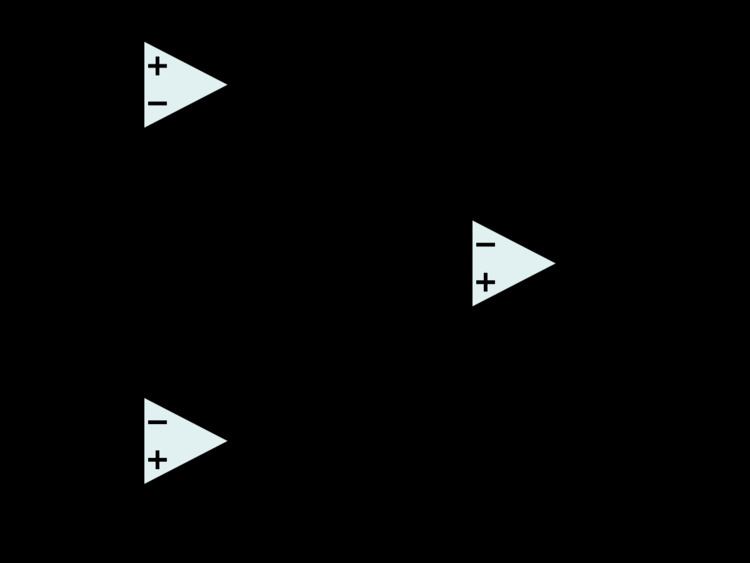 | ||
An instrumentation (or instrumentational) amplifier is a type of differential amplifier that has been outfitted with input buffer amplifiers, which eliminate the need for input impedance matching and thus make the amplifier particularly suitable for use in measurement and test equipment. Additional characteristics include very low DC offset, low drift, low noise, very high open-loop gain, very high common-mode rejection ratio, and very high input impedances. Instrumentation amplifiers are used where great accuracy and stability of the circuit both short and long-term are required.
Although the instrumentation amplifier is usually shown schematically identical to a standard operational amplifier (op-amp), the electronic instrumentation amp is almost always internally composed of 3 op-amps. These are arranged so that there is one op-amp to buffer each input (+,−), and one to produce the desired output with adequate impedance matching for the function.
The most commonly used instrumentation amplifier circuit is shown in the figure. The gain of the circuit is
The rightmost amplifier, along with the resistors labelled
The ideal common-mode gain of an instrumentation amplifier is zero. In the circuit shown, common-mode gain is caused by mismatch in the resistor ratios
An instrumentation amp can also be built with two op-amps to save on cost, but the gain must be higher than two (+6 dB).
Instrumentation amplifiers can be built with individual op-amps and precision resistors, but are also available in integrated circuit form from several manufacturers (including Texas Instruments, Analog Devices, Linear Technology and Maxim Integrated Products). An IC instrumentation amplifier typically contains closely matched laser-trimmed resistors, and therefore offers excellent common-mode rejection. Examples include AD8221, MAX4194, LT1167 and INA128.
Instrumentation Amplifiers can also be designed using "Indirect Current-feedback Architecture", which extend the operating range of these amplifiers to the negative power supply rail, and in some cases the positive power supply rail. This can be particularly useful in single-supply systems, where the negative power rail is simply the circuit ground (GND). Examples of parts utilizing this architecture are MAX4208/MAX4209 and AD8129/AD8130.
Feedback-free instrumentation amplifier is the high input impedance differential amplifier designed without the external feedback network. This allows reduction in the number of amplifiers (one instead of three), reduced noise (no thermal noise is brought on by the feedback resistors) and increased bandwidth (no frequency compensation is needed). Chopper stabilized (or zero drift) instrumentation amplifiers such as the LTC2053 use a switching input front end to eliminate DC offset errors and drift.
